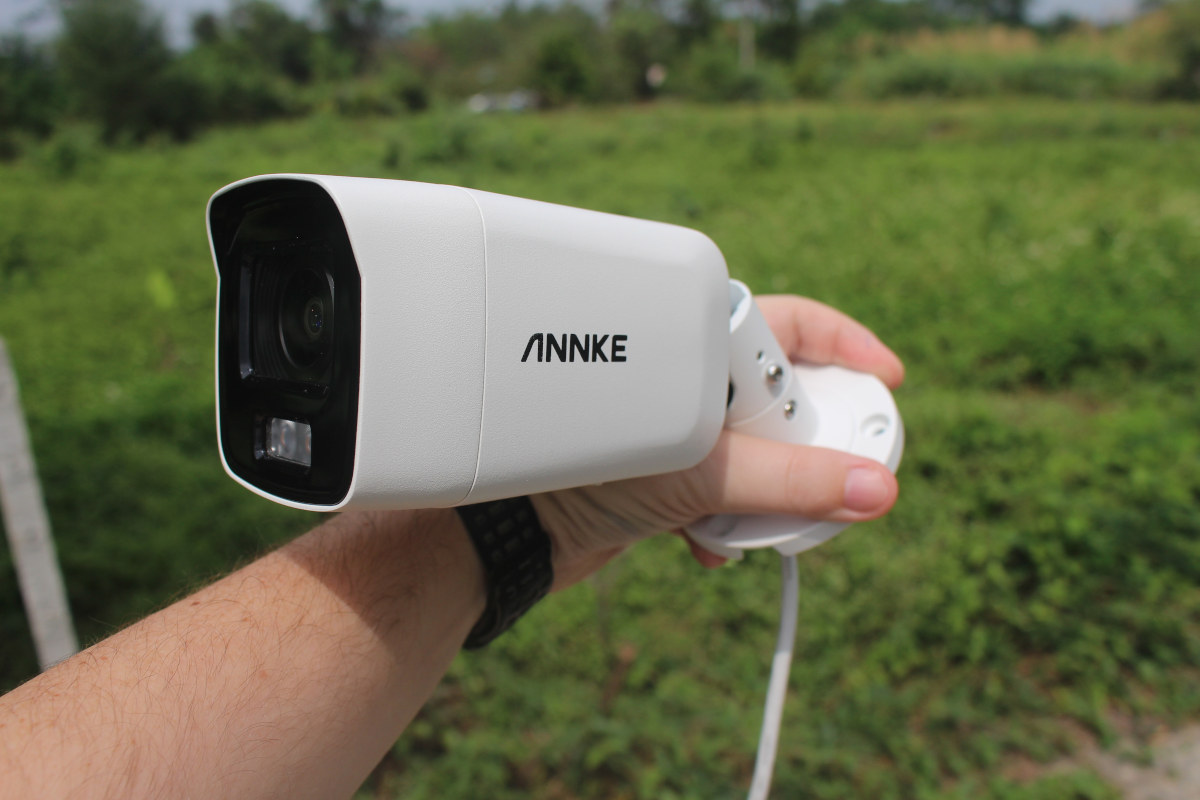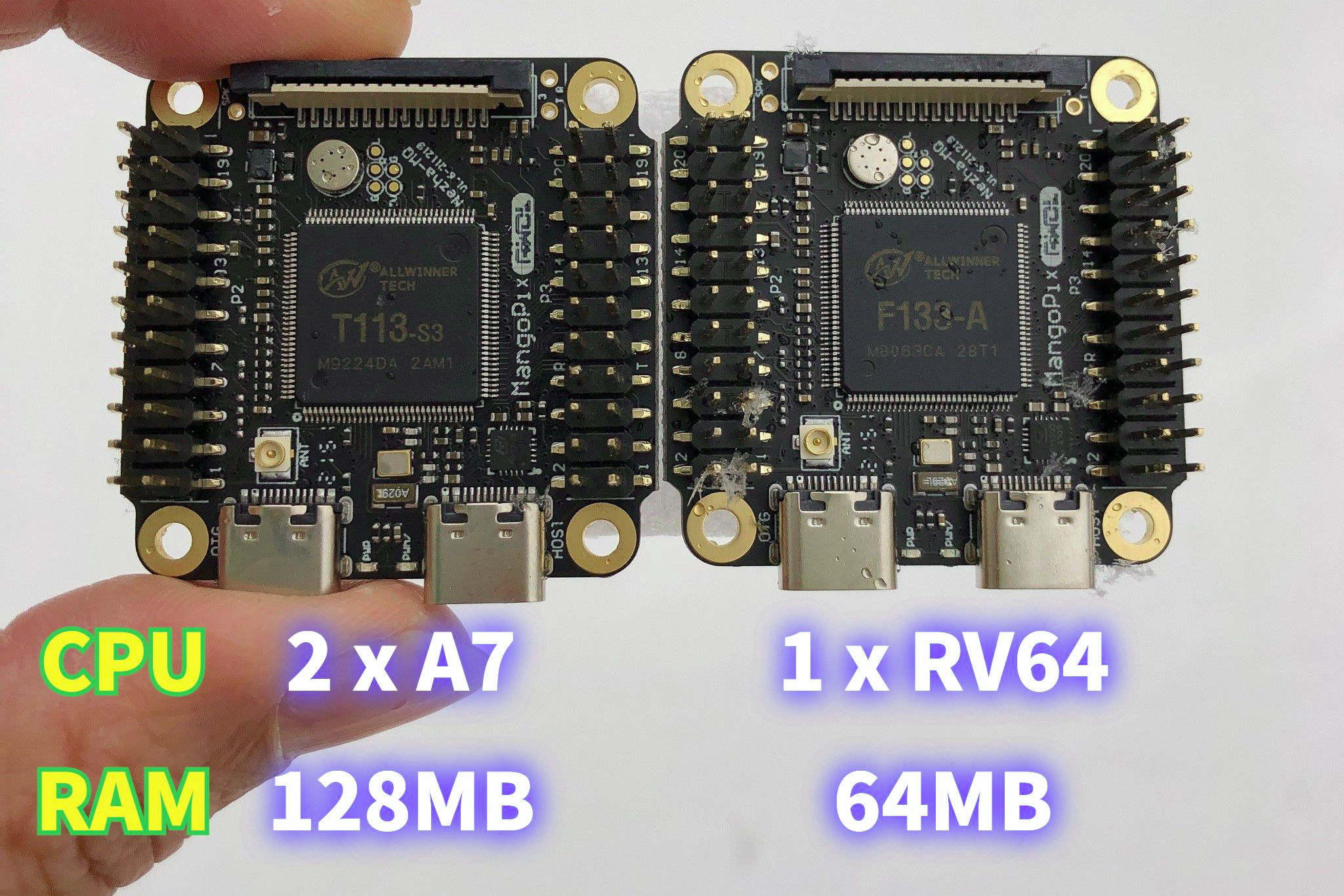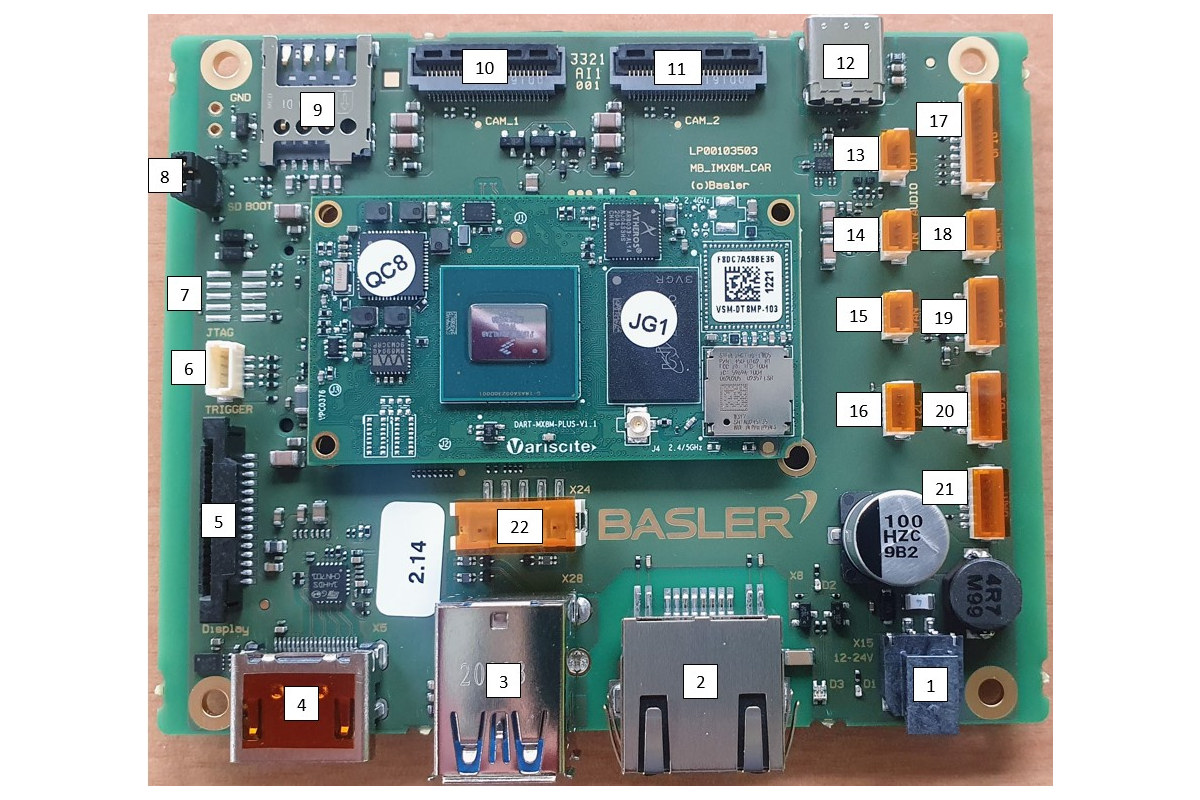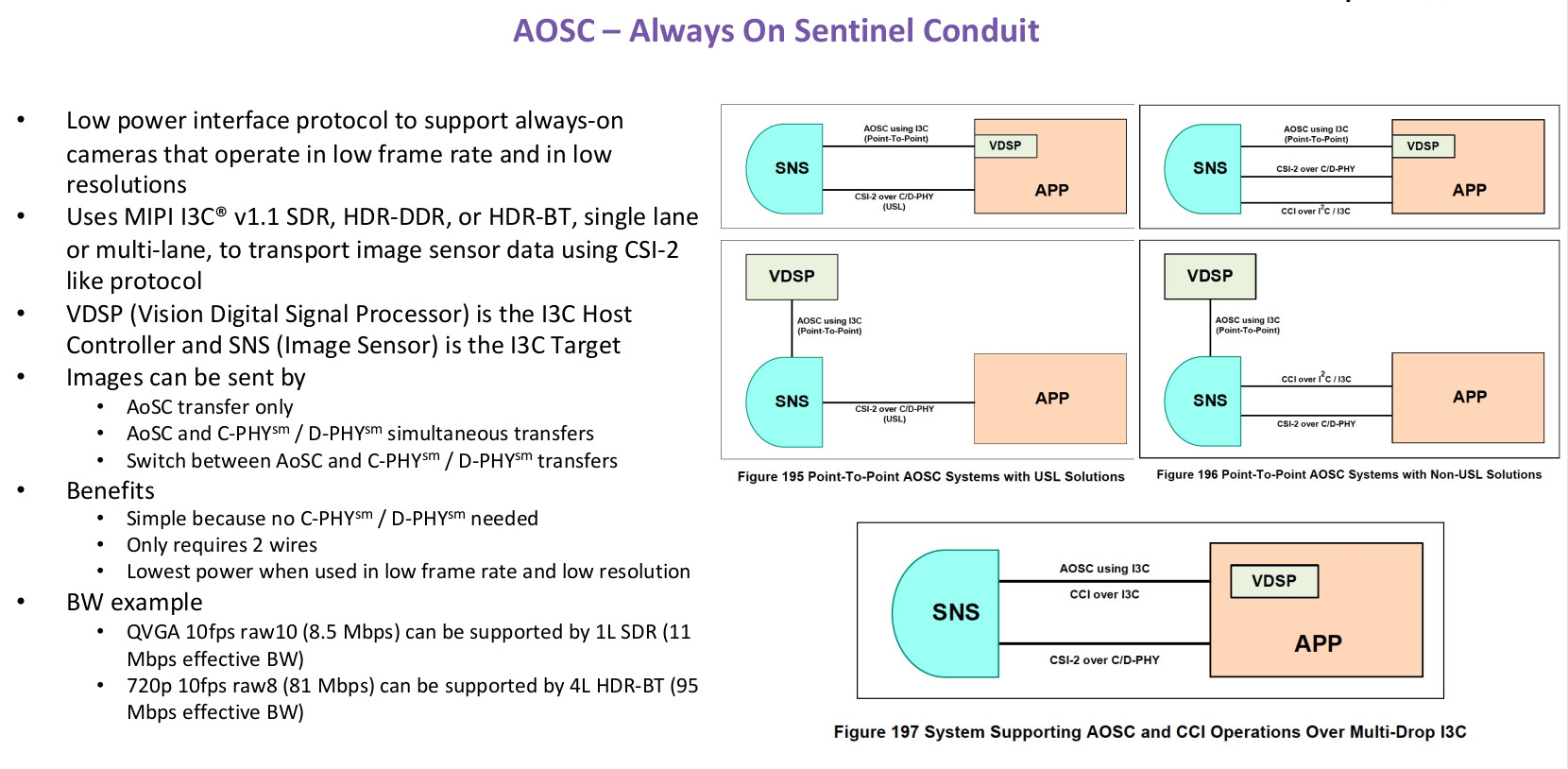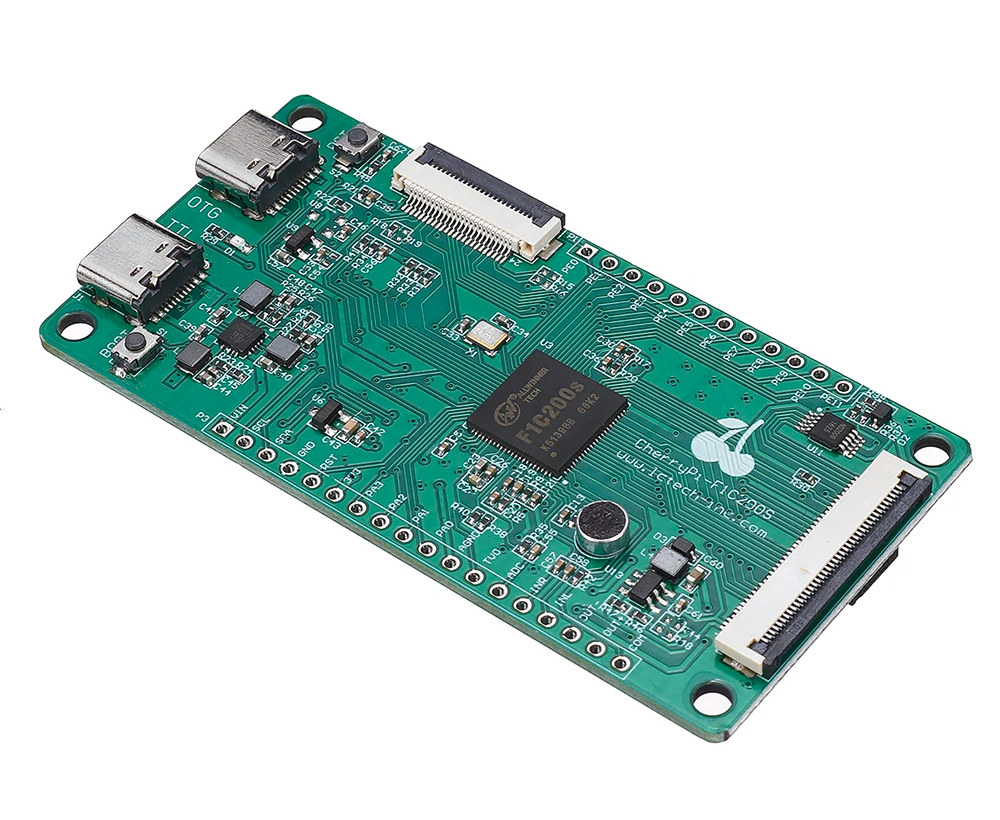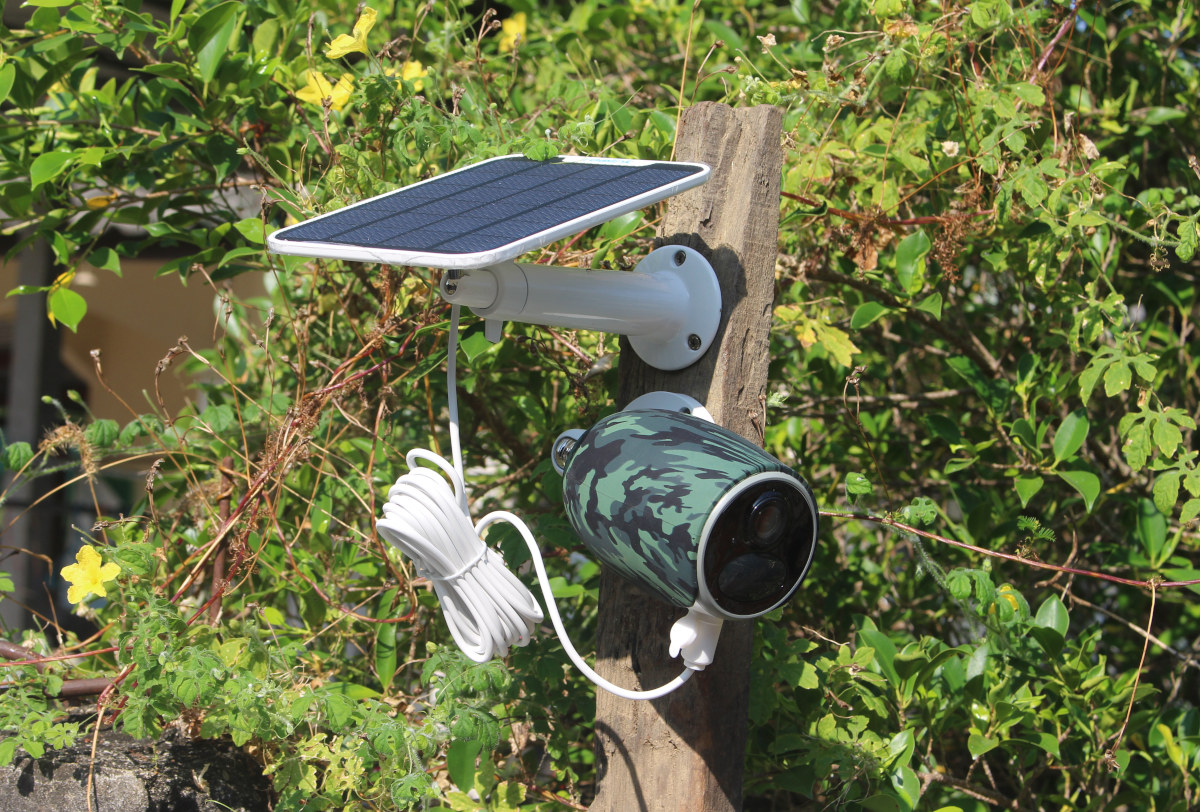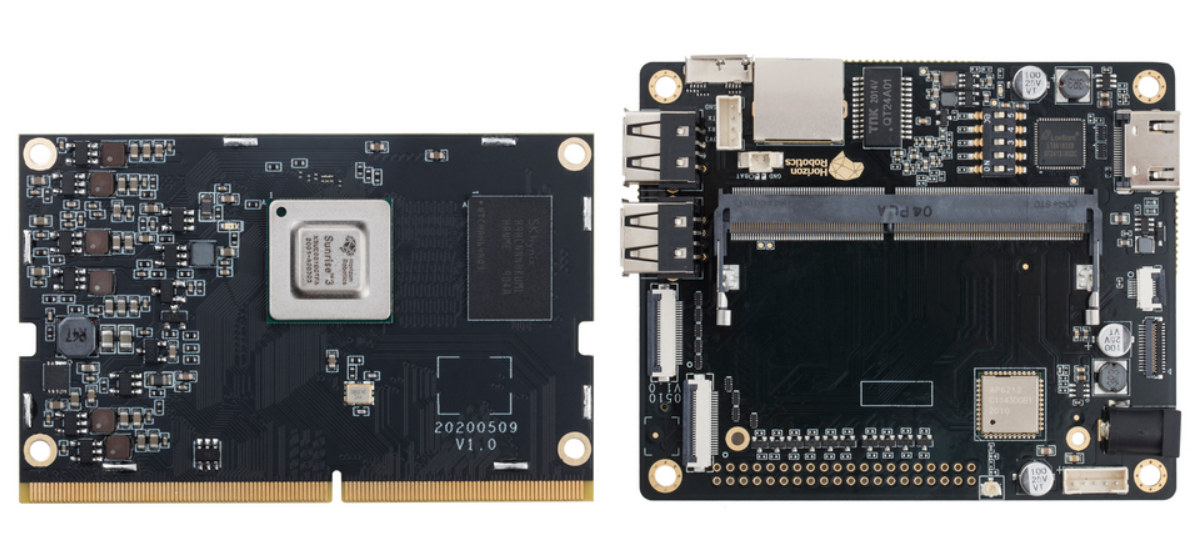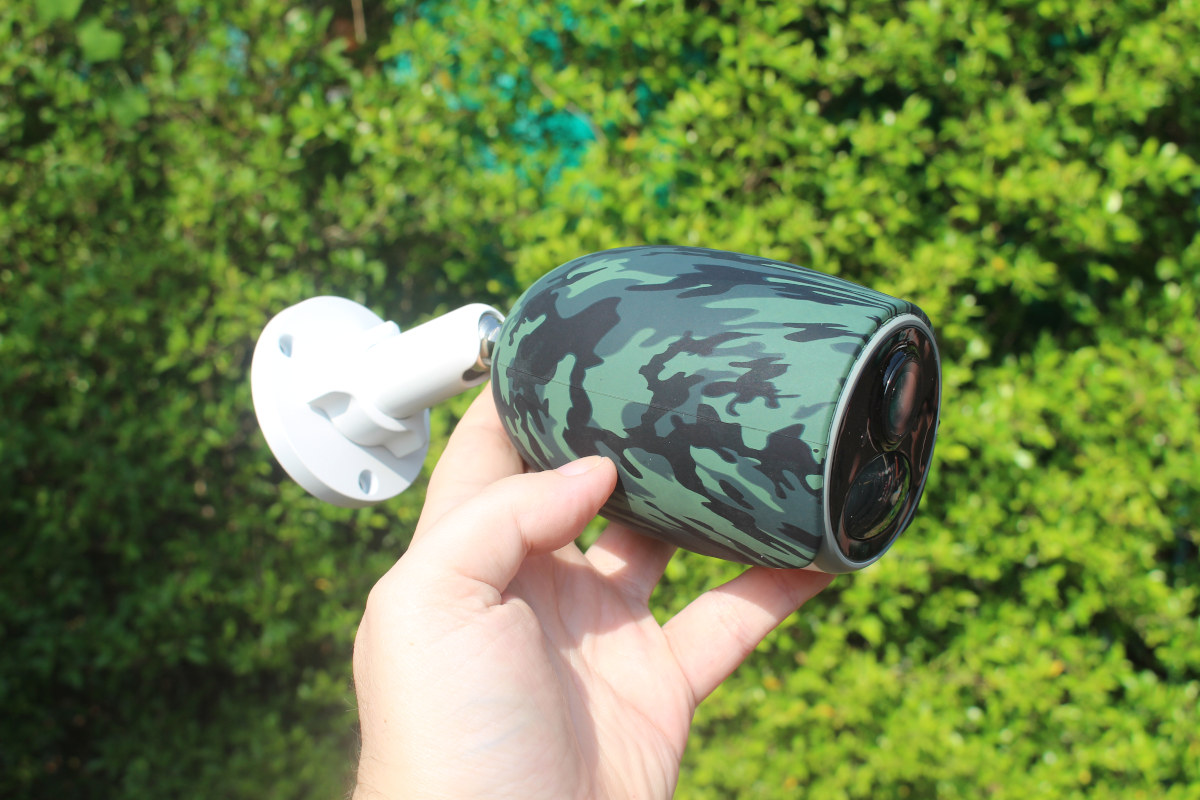ANNKE NC800 is a 4K security camera with people and vehicle detection, and other AI features as tested in our Annke CZ400 review. The main differentiating factor is support for “true full color” night vision that does not rely on a spotlight, but instead a “soft light”, a BSI sensor, and f/1.0 aperture as we’ll explain in a bit more detail below. The company sent me a sample for evaluation, and today I’ll check out the specifications of the “NightChroma NC800” camera and the content of the package, before installing and focusing testing on night capture in the second part of the review. ANNKE NC800 (I91BQ) specifications Camera Image Sensor – 1/1.2″ Progressive Scan CMOS Video Codec Main stream – H.265+/H.265/H.264+/H.264 Sub-stream – H.265/H.264/MJPEG Third stream – H.265/H.264 Framerate and Video Resolution 20 fps @ 3840×2160, 3072×1728 50 Hz: 25 fps @ 2688×1520, 1920×1080, 1280×720 60 Hz: 30 fps @ […]
RISC-V or Arm? This tiny 4x4cm Linux board with WiFi offers both options
Last fall, we wrote about Allwinner D1s/F133-A RISC-V processor and the upcoming MangoPi MQ1, a tiny 4x4cm board based on the processor. The board is not for sale, but we have more details, and the company is also working on an Arm version equipped with Allwinner T113-S3 dual-core Cortex-A7 processor that is pin-to-pin compatible with F133-A SoC. The Allwinner F133-A board will finally be called MangoPi Nezha-MQ, or MangoPi MQ for shorts, and come with 64MB on-chip RAM while the Allwinner T113-S3 board, with 128MB on-chip RAM, will be named MangoPi MQ-Dual. Both are fitted with a Realtek RTL8189-based Wi-Fi module, offer display and camera interfaces, two USB-C interfaces, and headers for GPIOs. MangoPi MQ RISC-V or Arm Linux board MangoPi MQ/MQ-Dual specifications: SoC (one or the other) MangoPi MQ – Allwinner D1s/F133-A 64-bit RISC-V processor @ 1 GHz with 64 MB DDR2 MangoPi MQ-Dual – Allwinner T113-S3 32-bit dual-core […]
Basler prB-IMX8MP embedded vision processing kit supports BCON for MIPI, GigE Vision, and USB3 Vision cameras
Basler prB-IMX8MP is a Linux-based, NXP i.MX 8M Plus powered embedded vision processing kit working with the company’s cameras designed for factory automation, medicine, traffic and several other markets. The board is equipped with Variscite DART-MX8M-Plus system-on-module and offers multiple camera interfaces to support BCON for MIPI, GigE Vision, and USB3 Vision cameras through Basler’s pylon Camera Software Suite. Basler prB-IMX8MP specifications with interfaces in bold usable by Basler cameras: SoC – NXP i.MX 8M Plus quad-core Cortex-A53 processor clocked at up to 1.8GHz, Cortex-M7 real-time core @ 800 MHz, 1080p H265/H264 encode/decode, AI/ML accelerator up to 2.3 TOPS, Vivante GC7000UL 3D GPU, Vivante GC520L 2D GPU System Memory – 8GB (CNXSoft: Probably a mistake since the DART-MX8M-PLUS module only supports 1GB to 4GB RAM. Is it 8 Gbit = 1GB?) Storage – 64 GB flash, MicroSD card slot Video Output – HDMI 2.0a up to 1080p60, 2-lane MIPI DSI […]
MIPI CSI-2 v4.0 adds features for always-on, low power machine vision applications
While MIPI CSI-2 standard was first introduced in 2005 as a high-speed protocol for the transmission of still and video images from image sensors to application processors, the standard has evolved over the years, and the latest MIPI CSI-2 v4.0 introduces features to better support always-on, low power machine vision applications, high-resolution sensors, and high-dynamic-range automotive image sensors. The main changes for v4.0 include support for a two-wire interface (MIPI I3C) to lower cost and complexity, multi-pixel compression for the latest generation of advanced image sensors, and RAW28 color depth for better image quality and an improved signal-to-noise (SNR) ratio. MIPI CSI-2 v4.0 highlights: Always-On Sentinel Conduit (AOSC) – Enables always-on machine vision systems with ultra-low-power image sensors and video signal processors (VSPs) continuously monitoring their surrounding environments and having the ability to wake up their more powerful host CPUs when specific events happen. Some use cases include laptop/tablet-based face […]
More Allwinner F1C200s ARM9 boards: MangoPi R3 and CherryPi-F1C200S
I wrote about the Widora TINY200 board based on Allwinner F1C200s ARM9 processor with 64MB built-in RAM, up to 512MB NAND flash, LCD and camera interfaces in April 2020. I was just informed more similar Allwinner F1C200s boards had recently shown up with Widora MangoPi R3 that’s basically the same as TINY200, and CherryPi-F1C200S with similar dimensions and features, but a different ports arrangement. Let’s have a look at both. MangoPi R3 MangoPi R3 specifications are the same as the ones for Tiny200 board, but they selected the 128MB NAND flash storage option, and changed the USB-TTL chip: SoC – Allwinner F1C200s ARM926EJS processor @ 420 MHz (overclockable to 700 MHz) with 64MB DDR RAM Storage – 128MB NAND flash and MicroSD card slot Display I/F – 40-pin RGB565 display interface and 6-wire touch interface Camera I/F – 24-pin DVP camera interface compatible with OV2640, GC0328, etc. Audio – Onboard […]
Reolink Go Plus 4G review – Part 2: A Solar-powered 4G LTE security camera with person & vehicle detection
Last month, I received Reolink Go Plus 4G smart security camera with 4G LTE connectivity, vehicle/human detection support, and powered by a solar panel. In the first part of the review, I did an unboxing, added the camera to the Reolink Android app, and confirmed it worked with my DTAC SIM card. I’ve now installed the camera and had time to test more of its features, so I can report my experience with the security camera. Reolink Go Plus 4G camera and solar panel installation I wanted to use the camera near the gate that’s outside of (reliable) WiFi range. So I found a piece of hardwood to which I attached the mounts of the camera and solar panel… … and attached it to the wall. My current installation works for testing, but it’s not the most secure as the camera is quite visible and only placed a little over […]
Horizon X3 AI development board is powered by Sunrise 3 AI Edge Arm processor
Horizon X3 AI development board is powered by Horizon Robotics Sunrise 3 (aka X3) quad-core Cortex-A53 processor with a 5 TOPS NPU, and multiple camera support with the chip apparently designed for the automotive industry. [Update January 25, 2022: A third-party company, Finsbury Glover Hering, claiming to represent Horizon Robotics informed CNX Software the chip is not designed for the automotive market, and that Horizon’s AIoT business is actually limited to the domestic China market and not overseas.] The devkit is comprised of a Sunrise 3 system-on-module with 1GB LPDDR4 & 16GB EMMC memory, as well as a baseboard with Gigabit Ethernet and WiFi, HDMI up to 1080p60 and MIPI DSI interface, a camera interface, and a 40-pin header for expansion. Horizon X3 AI development board specifications: SoC – Horizon Robotics Sunrise 3 quad-core Cortex-A53 processor @ 1.2 GHz, one Cortex-R5 core, a 5 TOPS NPU (2x “Bernoulli” BPU) System […]
Reolink Go Plus 4G smart security camera with solar panel – Unboxing and first setup
I’ve received several Reolink IP cameras either connected over WiFi or Ethernet, but the company has just sent me Reolink Go Plus 4G security camera together with a solar panel that would let me access the camera from anywhere with cellular network connectivity. Reolink Go Plus integrates a 4MP camera and supports person and vehicle detection, just like Reolink RLC-810A model I reviewed earlier this year. I have three Reolink cameras, and I’m somewhat satisfied except that the connection to WiFi cameras is often unreliable, and I have to rely on Cloud backup to play video captures most of the time. The Ethernet-connected Reolink RLC-810A has a much more reliable connection. So I’ll have to see if the Reolink Go Plus camera is more accessible over 4G LTE than WiFi cameras. I’ll start the review by checking out the packages and going through the initial setup for the Reolink Go […]


